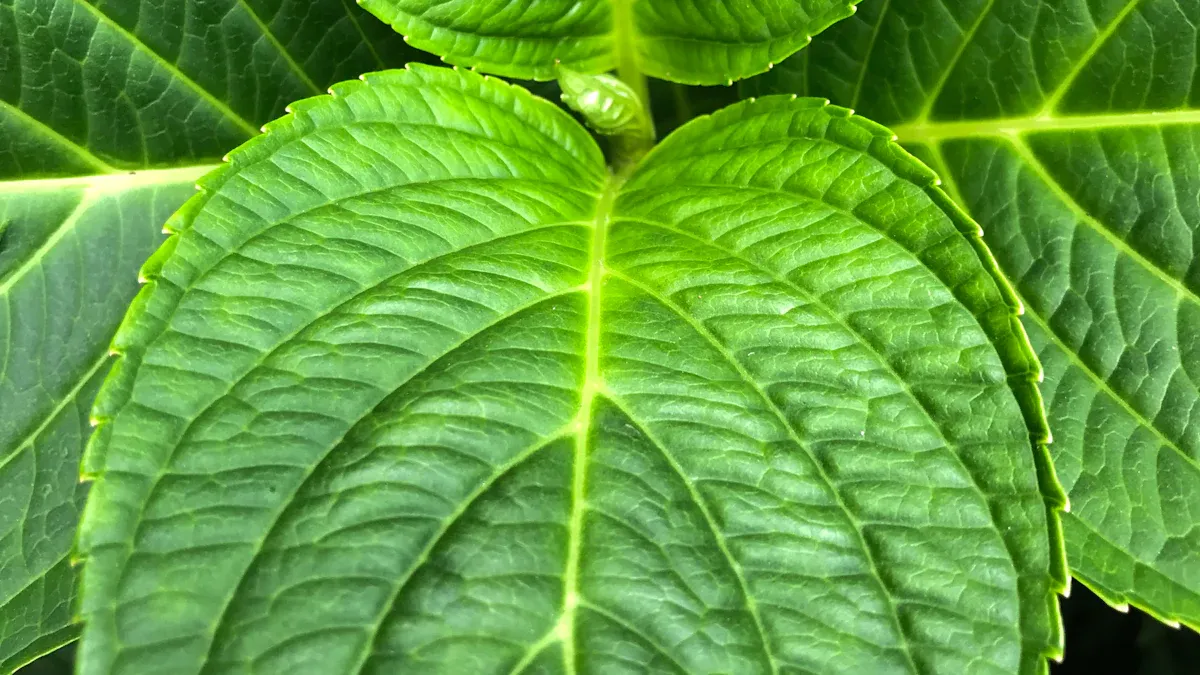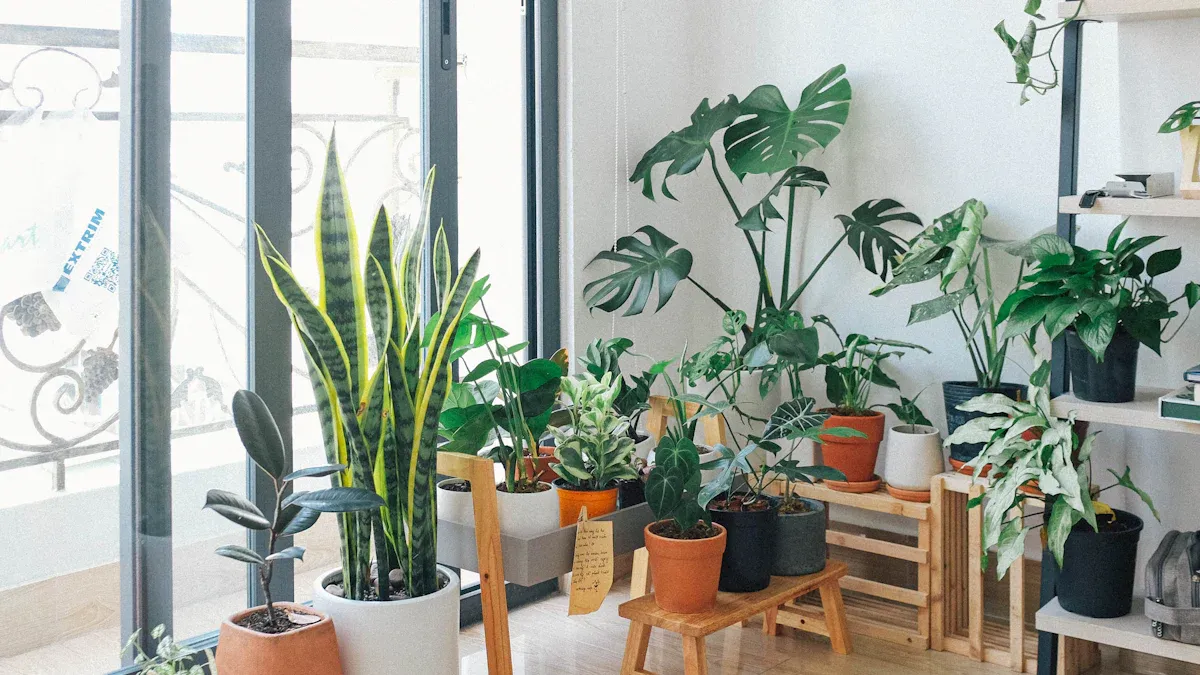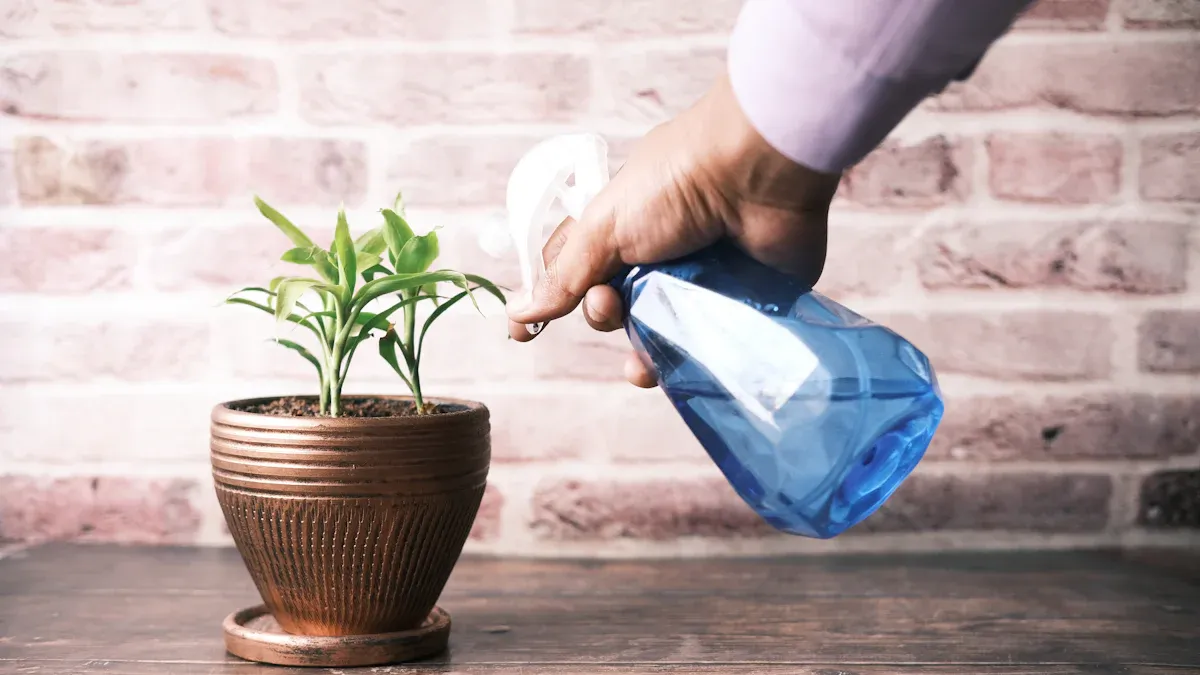
If you’re looking to add a unique touch to your home, the Vicks Plant Care is a fantastic choice with the Vicks plant (Plectranthus tomentosa)! Known for its soft, velvety leaves and refreshing menthol scent, this plant has become a favorite among houseplant enthusiasts. It’s not just pretty; it thrives with minimal care, making it perfect for busy plant lovers. Originating from South Africa, the Vicks plant flourishes in bright, indirect light and has a reputation for being hardy. With the right attention through Vicks Plant Care, you can enjoy its beauty and benefits for years to come!
Key Takeaways
Provide bright, indirect light for your Vicks plant. Avoid direct sunlight to prevent leaf burn.
Water your plant every 9 days in bright light. Adjust frequency based on light conditions to keep the soil moist but not soggy.
Use rich, well-drained soil with a slightly acidic to neutral pH. This supports healthy root growth.
Check your plant regularly for pests. Early detection helps keep your Vicks plant healthy.
Propagate your Vicks plant in fall or late winter for the best results. Use healthy stem cuttings and a moistened growing medium.
Vicks Plant Light Needs

Ideal Light Conditions
To keep your Vicks plant thriving, you need to provide it with the right light conditions. This plant loves bright, indirect sunlight. Ideally, place it less than a foot away from a south-facing window. This positioning allows the plant to soak up the light it craves without being scorched by direct rays. Here are some key points to remember:
Bright Indoor Light: The Vicks plant thrives in bright light.
Avoid Direct Sunlight: Direct sunlight can harm the leaves, causing them to burn.
By ensuring your plant gets the right amount of light, you set the stage for healthy growth and vibrant foliage.
Signs of Insufficient Light
If your Vicks plant isn’t getting enough light, it will let you know through various signs. Keep an eye out for these indicators:
Leggy Growth: If you notice the stems stretching towards the light, your plant is reaching for more brightness.
Pale Leaves: Leaves that lack vibrancy may signal that your plant is struggling.
Reduced Leaf Size: Smaller leaves than usual indicate that the plant is not thriving.
You might also see longer internodes on new growth compared to older parts of the plant. New leaves may appear smaller and lighter in color than older ones. In severe cases, older leaves may even die off. If you spot these signs, consider moving your plant closer to a light source to help it bounce back.
By paying attention to your Vicks plant’s light needs, you can ensure it remains healthy and beautiful. Remember, proper light conditions are a crucial part of Vicks Plant Care!
Vicks Plant Watering Guidelines

Frequency of Watering
When it comes to watering your Vicks plant, consistency is key. You want to keep the soil moist but not soggy. Here’s a simple guideline to follow:
In Bright Light: If your plant enjoys bright, indirect sunlight, aim to water it every 9 days. You’ll want to give it about 0.5 cups of water during each session.
In Low Light: If your plant is in a shadier spot, you can extend the watering interval. Just make sure to check the soil moisture regularly.
Seasonal Adjustments: During summer, let the soil dry slightly between waterings. In winter, reduce the frequency but ensure the soil doesn’t completely dry out. This balance helps prevent leaf drop or fungal diseases.
Remember, the Vicks plant loves consistent moisture, so keeping an eye on the soil is essential for its health.
Signs of Overwatering and Underwatering
Understanding how to identify the signs of overwatering and underwatering can save your Vicks plant from stress. Here’s what to look for:
Signs of Overwatering:
Wilting Leaves: You might notice your plant wilting even when the soil is wet. This can be a sign of root rot.
Yellowing Leaves: If the leaves start turning yellow, it’s a clear indicator that you may be giving your plant too much water.
Foul Smell: Wet soil with a bad odor often points to overwatering and potential root issues.
Signs of Underwatering:
Drooping Leaves: If the leaves droop but perk up after watering, your plant is thirsty.
Browning or Curling Leaves: Look for leaves that are browning or curling without any yellowing. This usually indicates a lack of water.
Hard, Dry Soil: If the soil feels hard and dry, it’s time to give your plant a drink.
By keeping an eye on these signs, you can adjust your watering routine to keep your Vicks plant healthy and thriving. Remember, proper watering is a crucial part of Vicks Plant Care!
Vicks Plant Soil and Fertilization
Best Soil Types
Choosing the right soil for your Vicks plant is crucial for its growth. You want to provide a mix that supports healthy roots and vibrant leaves. Here are the best soil types for your Plectranthus tomentosa:
Rich, Humusy Soil: This type of soil retains moisture while providing essential nutrients.
Well-Drained Soil: Good drainage prevents water from pooling, which can lead to root rot.
Slightly Acidic to Neutral pH: Aim for a pH range of 6.0 to 7.0. This range helps your plant absorb nutrients effectively.
Using a well-draining soil mix is essential for the health of your Vicks plant. You can create your own mix by combining potting soil with perlite or sand to enhance drainage.
Fertilization Schedule
Fertilizing your Vicks plant properly can make a big difference in its growth and appearance. Here’s a simple fertilization schedule to follow:
Light Fertilization: Especially for container plants, light fertilization is key.
Slow-Release Fertilizers: Use a balanced nutrient mix to provide steady nourishment.
Liquid Fertilizer: Apply half-strength liquid fertilizer every two weeks during the growing season. This helps maintain vibrant coloration without overwhelming the plant.
Avoid Over-Fertilization: Too much fertilizer can harm your plant, so stick to the recommended amounts.
By following this fertilization schedule, you’ll help your Vicks plant thrive and showcase its beautiful foliage. Remember, proper soil and fertilization are vital components of Vicks Plant Care!
Vicks Plant Pest Management
Keeping your Vicks plant healthy means being aware of potential pests. While infestations are rare, it’s good to know what to look for and how to manage any issues that arise.
Common Pests
Your Vicks plant (Plectranthus tomentosa) can face a few common pests, including:
Whiteflies: These tiny insects can be hard to spot but may cause damage if left unchecked.
Aphids: These small bugs often gather on the stems and leaves, sucking the plant’s juices.
Red Spider Mites: These pests thrive in dry conditions and can create webbing on your plant.
Even though these pests can affect your plant, infestations are not very prevalent. Keeping an eye on your plant can help you catch any issues early.
Preventative Measures
To keep your Vicks plant safe from pests, consider these effective preventative measures:
Regular Inspections: Check your plant weekly for any signs of pests. Early detection can save you a lot of trouble.
Maintain Humidity: Spider mites love dry air. Keeping your plant in a humid environment can help deter them.
Use Companion Plants: Some plants can naturally repel pests. For example, the Vicks plant itself releases volatile organic compounds (VOCs) that can repel whiteflies. Key VOCs like limonene, α-pinene, and terpinolene have shown significant repellent effects on these pests.
Clean Leaves: Wipe the leaves with a damp cloth to remove dust and any potential pests. This simple step can help your plant breathe better and stay healthy.
By following these tips, you can protect your Vicks plant from pests and ensure it continues to thrive. Remember, a little prevention goes a long way in keeping your plant happy and healthy!
Vicks Plant Propagation Techniques
Methods of Propagation
Propagating your Vicks plant is a rewarding experience. You can easily grow new plants from cuttings. Here’s how to do it:
Take Stem Cuttings: Choose healthy stems with 2-4 leaf nodes.
Snip the Cutting: Cut about 1/4″ below the nodes. This helps the cutting absorb water better.
Use a Moistened Growing Medium: A mix of potting soil and vermiculite works well. This combination retains moisture while allowing for good drainage.
Place the Cutting: Set it near a windowsill where it can receive diffuse sunlight. This light helps the cutting establish roots.
Expect Rooting: You should see roots developing in about three weeks.
Make sure to protect your cuttings from frost and heavy rains. Use well-draining pots and soil to prevent waterlogging. Water deeply when the soil feels dry, ensuring your new plants get the moisture they need.
Best Time to Propagate
Timing is everything when it comes to propagation. For the best results, you should propagate your Vicks plant in the fall or late winter. These seasons are optimal for root development. During these times, the plant is less stressed, and the conditions are just right for new growth.
By following these propagation techniques and timing your efforts correctly, you can expand your collection of Vicks plants with ease. Happy propagating! 🌱
Caring for your Vicks plant is essential for its long-term health and growth. Here’s a quick recap of what you need to remember:
Light: Provide bright light but avoid direct sunlight.
Water: Keep a regular watering schedule.
Soil: Use fertile, well-drained soil.
Potting: Repot at least once a year.
Temperature: Maintain a minimum of 16°C.
Humidity: Aim for humidity levels between 50% to 80%.
By following these tips, you’ll not only enjoy a thriving plant but also benefit from its soothing aroma. Studies show that the Vicks plant can lower heart rates and improve emotional well-being. So, get started on your Vicks plant care journey today, and watch your plant flourish! 🌱
FAQ
What is the best way to care for my Vicks plant?
To care for your Vicks plant, provide bright, indirect light, water regularly, and use well-draining soil. Fertilize every two weeks during the growing season for optimal growth.
How often should I repot my Vicks plant?
You should repot your Vicks plant at least once a year. This helps refresh the soil and gives the roots more space to grow.
Can I grow a Vicks plant outdoors?
Yes, you can grow a Vicks plant outdoors in warm climates. Just make sure to protect it from direct sunlight and harsh weather conditions.
How do I know if my Vicks plant is healthy?
A healthy Vicks plant has vibrant green leaves, sturdy stems, and a pleasant aroma. If you notice yellowing leaves or wilting, it may need adjustments in care.
Is the Vicks plant safe for pets?
Yes, the Vicks plant is generally considered non-toxic to pets. However, it’s always best to monitor your pets around any plants to ensure their safety.

